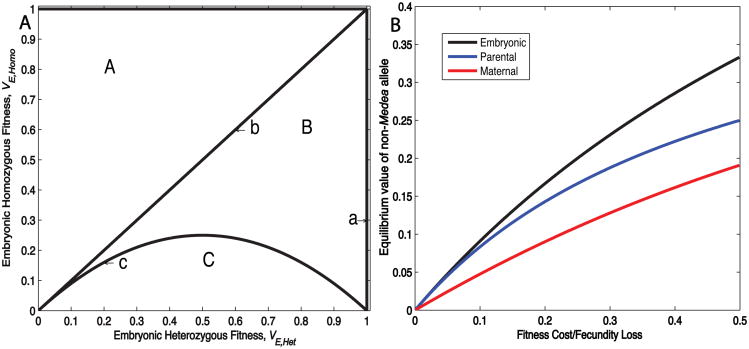Figure 2.
Equilibrium characteristics of autosomal Medea elements with fitness costs. (A) Diagram partitioning (VHet, VHomo) fitness parameter space into regions in which linear stability analysis indicate qualitatively similar behaviors are observed. This diagram is identical for a Medea with parental fitness cost. Qualitative behavior changes as each curve is crossed, with the occurrence of a bifurcation. Transcritical bifurcation occurs as Equilibrium 3 moves through Equilibrium 4 (i.e. the two collide), with the two equilibria exchanging stability. Curve c separates regions B and C. On this curve, Equilibrium 2 and 3 are coincident. Transcritical bifurcation occurs as the two equilibria collide, with the two equilibria exchanging stability. (B) Stable internal equilibrium values of the non-Medea allele are plotted as a function of fitness cost/fecundity loss for embryonic, sex-independent parental, or maternal costs.

